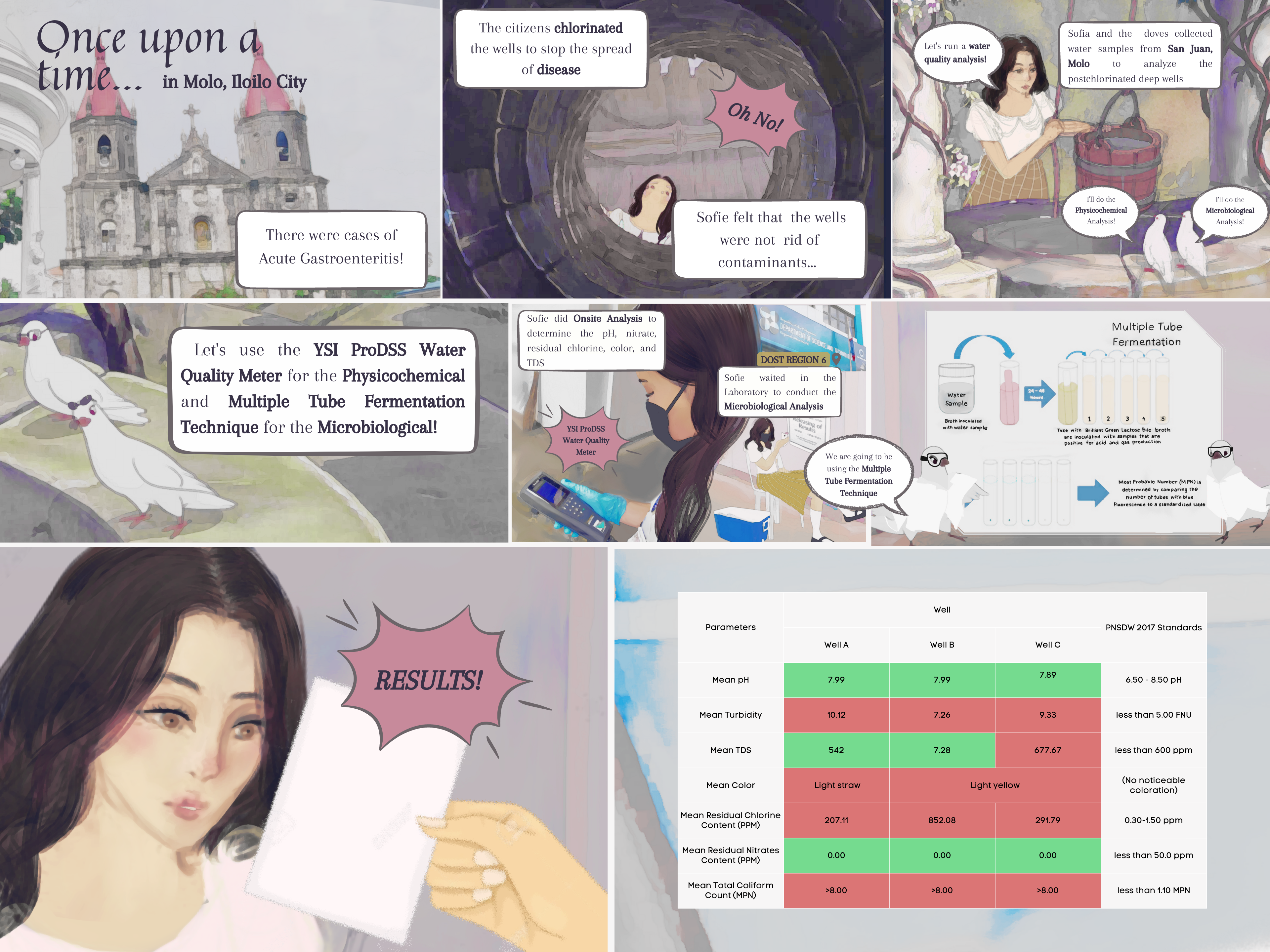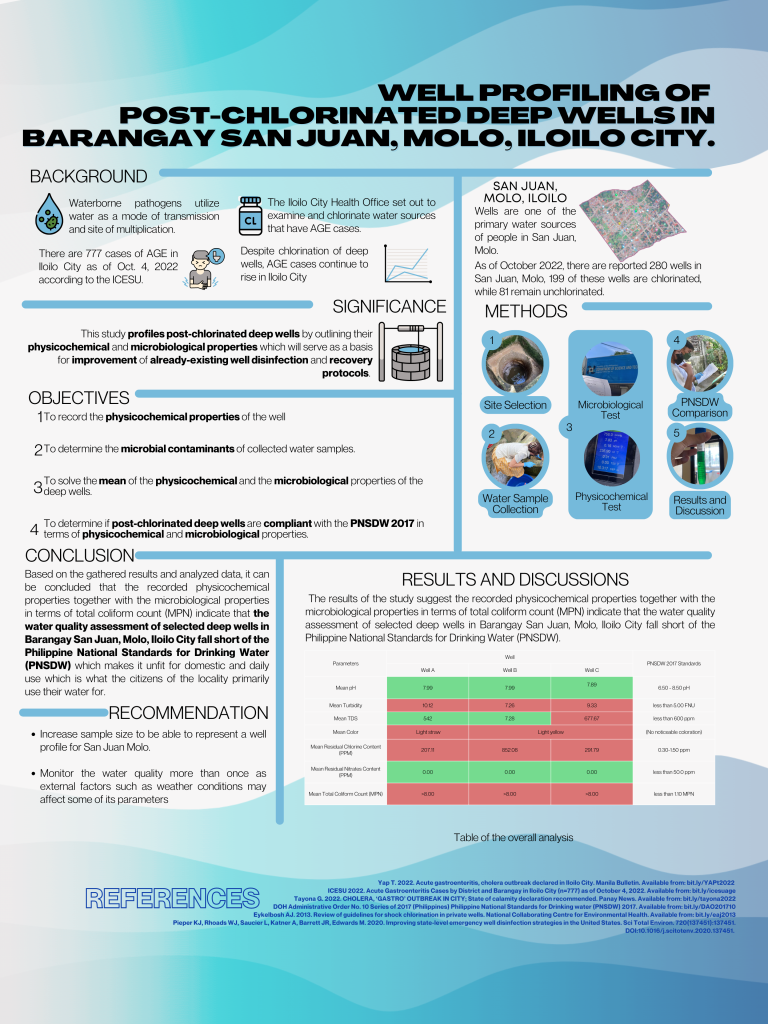Water quality assessment of post-chlorinated wells in San Juan, Molo, Iloilo City following acute gastroenteritis (AGE) outbreak
JANUS NATHANIEL G. CASBADILLO, SOFIA SOLEIL P. HARESCO, and MARIA DEANNA JOLITO
Philippine Science High School Western Visayas Campus – Department of Science and Technology (DOST-PSHS WVC), Brgy. Bito-on, Jaro, Iloilo City 5000, Philippines
Abstract
Groundwater wells in residential areas like San Juan, Molo, Iloilo City areimportant water sources for domestic use. However, these wells are susceptible to contamination, leading to waterborne illnesses. Following an outbreak of acute gastroenteritis (AGE) in Iloilo City in August 2022, water sources in affected communities were examined and treated with chlorine. Despite these efforts, the number of AGE cases continues to rise in San Juan, Molo, one of the most affected areas in the city. This study aimed to evaluate the water quality of post-chlorinated wells in San Juan, Molo, Iloilo City, focusing on physicochemical and microbiological properties. The assessment revealed that the analyzed wells exceeded the maximum allowable level (MAL) set by the Philippine National Standards for Drinking Water (PNSDW) of 2017 in terms of turbidity, color, residual chlorine content, and total coliform count. Consequently, the water from these post- chlorinated wells is unsuitable for domestic use. These findings suggest that local disinfection strategies for well systems in San Juan, Molo, Iloilo City are ineffective in eliminating water pathogens and maintaining water quality.
Keywords: water, wells, physicochemical, microbiological, PNSDW


